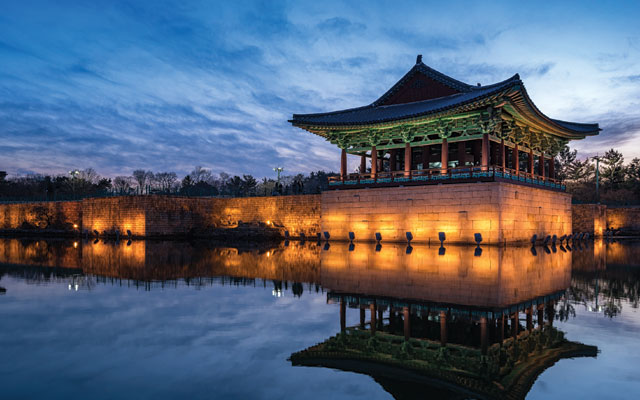A relatively late-starter in South Korea’s race for business and association events, heritage city Gyeongju catches up quickly with several wins
Gyeongju, a quiet city on South Korea’s southeastern coast, is better known among the locals for being the capital of the ancient Silla Dynasty which existed more than a millennium ago. The generations of rulers dotted the land with regal monuments and architecture, resulting in extensive historical remains today – many of which are still being discovered through planned excavations.

This has influenced Gyeongju’s landscape, remarked Kyla Joo, assistant manager, convention services, convention sales team with the Gyeongju Convention and Visitors Bureau.
“While Gyeongju has plenty of land, construction has to proceed very carefully as there could be precious relics underneath and as such land permitted for development is limited,” she said.
Despite the strict regulations on infrastructural development, Gyeongju has managed to build itself the Bomun Tourist Complex, a massive area with tourism facilities such as attractions, hotels of various star ratings, dining enclaves and a convention centre.
Gyeongju Hwabaek International Convention Center (HICO) opened in Bomun Tourist Complex in March 2015. It is located within walking distance of 10 hotels, such as the five-star Hilton Gyeongju and The-K Hotel.
HICO, built by the Korea Hydro & Nuclear Power (KHNP) organisation and gifted to Gyeongju City Hall, is deemed to be instrumental in Gyeongju’s ability to rise as a congress destination. The venue is able to accommodate more than 3,500 people.
Joo said: “Gyeongju CVB, as a representative of Gyeongju Destination Marketing, has been established for four years now (since 2014) but it was with the completion of HICO that Gyeongju has been able to welcome many high-profile international congresses such as the 66th UNDPI/NGO Conference in 2016 and the World Association of Nuclear Operators (WANO) General Meeting in 2017.
“This year alone we will have six international association congresses calling at Gyeongju, most of them related to medicine and engineering.”
Joo clarified that medicine and engineering are not among Gyeongju’s main economic pillars, but her city has been able to win these meetings over with the modern facilities at HICO.
Gyeongju has also seen success in winning over nuclear power-related meetings as a result of KHNP’s relocation of its main office to the city in March 2016.
“There is very close cooperation between KHNP and our CVB. KHNP feeds us a lot of information on upcoming international nuclear congresses. Since last year we had have four or five conferences related to nuclear power, and it was all because of KHNP,” she added.
“Gyeongju’s rich heritage has also spurred us to go after heritage-related congresses. Last year we hosted the World Congress of (Organization of World Heritage Cities (OWHC) and because of the success of that conference, UNESCO has taken its Asia-Pacific meeting to our city in September.”
Joo told TTGassociations that the young bureau is determined to build the city up as a prominent congress destination. To this end, it has been participating in relavant trade events such as those organised by ICCA and UIA.
“That’s also where we get our intelligence on potential rotating congresses we could try for,” she said.
Besides HICO, smaller meetings in Gyeongju are also often held at business event-ready five-star hotels. Hilton Gyeongju has welcomed its fair share of association meetings over the years, even before the establishment of the Gyeongju CVB.
According to Jongwoo Yoo, manager, sales & marketing Seoul Office, Hilton Hotels & Resorts, past events include the World Green Energy Forum in 2014 and 2016, the second Regional Conference for World Heritage Cities in 2016, the 2014 International Foot and Ankle Biomechanics Congress, the APEC Education Ministerial meeting in 2014, and the G20 Finance Minister’s Meeting, among many others. This year’s line-up included the 2018 Synchrotron Radiation in Polymer Science in September and the 3rd IAEA HRD Conference in May.
The five-star hotel boasts a Grand Ballroom for up to 500 guests and 15 customisable function rooms.
Although Joo said Gyeongju has enough hotel rooms to support the size of congresses the city typically attracts today – an average of 500 to 600 delegates, she hopes to see an emergence of more five-star international branded hotels.
She explained: “When these hotels open in a destination, they do their part in destination marketing and that helps us to get our name out.”











